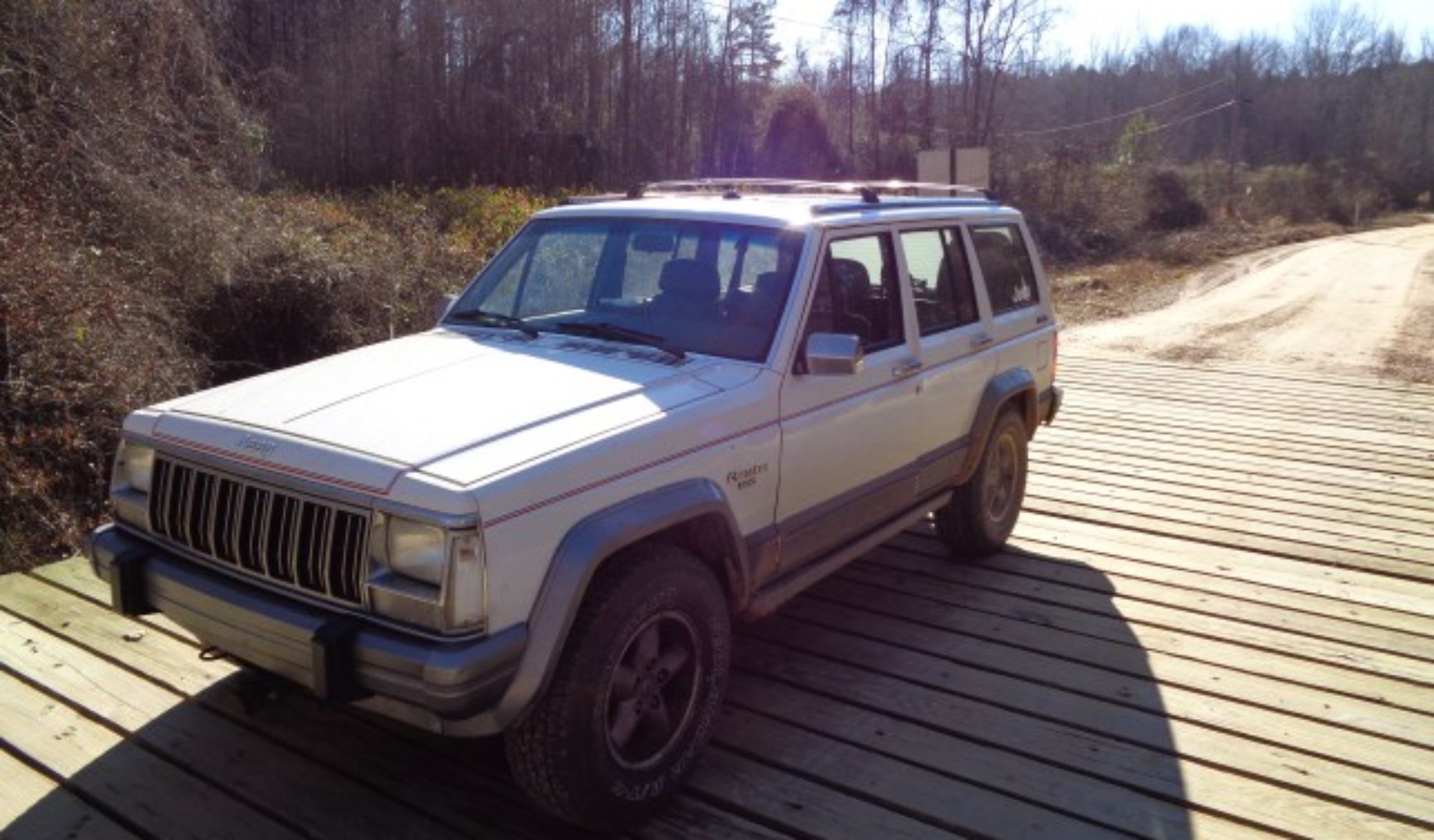Rear Disk Brake conversion on a Jeep Cherokee

I converted the rear brakes on my Jeep Cherokee from drums to disks. I used parts from a 96 ZJ Dana 35 to make the conversion.
I removed the brake backing plates, hand brake cables, hydraulic lines, and mounting brackets from the ZJ axle. I also pulled the bracket that holds the cables to the body as well as the brake adjuster and balance bar. The conversion might have been easier if I had pulled the ZJ handbrake lever as well.
Removing the drum brakes from my XJ meant disassembling my Lock Rite locker to get the C clips loose. This is not a big job except that it never comes apart like I think it should and it takes me a while to remember which slot the C clip has to exit through.
When I pulled the cover, I noticed that it had been way too long since I changed the gear oil in the diff. I also noticed that on a previous outing where I had banged the diff cover on a stump, it had in fact made contact with the ring gear. The gear is fine but the cover had a cut in it. I hammered the cover back close to its original shape while I had it off.
With the axles out of the way, the drum brakes came off with four mounting bolts. My backing plates were stuck to the axle with dirt and rust and had to be tapped with a hammer to slide them off the end of the axle housing.
I found that the center hole in the disk brake plate was too small to go over my 8.25 housing. I used a milling bit chucked in my drill press to enlarge the hole so it would slide over. The bolt pattern matched. The mounting studs on the 8.25 are a little too short but there seems to be enough thread engagement. If I ever do this swap again, I will pull the mounting studs from the ZJ axle as well.
With the backing plates mounted, I attached the calipers to the plates. The upper bolt is partially obstructed by the leaf spring, but it went in anyway. I also found that if the bolt is slipped into the caliper before it is set in place it all goes together easily.
I used the hydraulic lines from the ZJ. The line on the left brake was close to the right shape and required only minor bending. The long line to the right brake required quite a bit of re shaping to go over the 8.25 pumpkin and line up with the caliper. It eventually fit. The rubber line from the axle to the body matched up perfectly with the XJ hard line at the body. There is also the advantage that the ZJ line is longer than the XJ line so I don’t have the line limiting the droop as before.

I used the ZJ hand brake cables because the XJ cables have a different end on them. I removed the bracket from the bottom of the ZJ and cut it in half. I used only the rear half. I bolted the rear half to the floor of my XJ just above where the old cable clips are.

I used the balance bar from the ZJ and used the ZJ brake adjuster rod as an extension on the XJ brake rod. I had to add a couple more inches to the rod to make it all connect up.

Once diff was refilled with gear oil and the brakes bled I mounted the wheels. One thing I had over looked was that the rotors are enough thicker than the drums to make the lugs bolts too short. I will have to replace these as they need another thread or two to be fully engaged with the lug nuts. If I had closed end nuts I would never have noticed.
Stopping power is vastly improved over what I had because I had a leaking wheel cylinder on the drum brakes. I used the original proportioning valve.
It took several adjustments to get the hand brake tight enough to hold on my steep driveway. However, once the slack was out of the cables, it held fine. My hand brake has not worked right on the drums for a couple of years so it will be really nice to not have to find trees to brace against when I need to hop out on the trail.











